Physiological Factors (Part 2)
The short and long term effects of alcohol and other drugs on the human body. Specifically, regarding short term effects, how heart rate and respiration are affected and the effects of alcohol on the brain, nervous system, judgment, alertness, vision, physical condition, coordination, and reaction time (motor skills). For long term effects, specifically, liver damage, stomach damage, pancreatic damage, esophagus damage, heart damage, and brain damage. Associated weight loss/gain and nutritional factors.
Now that we have identified the drugs, including alcohol, that are most frequently used by people living in our country, let’s review and compare the short and long term effects of alcohol and illicit drugs on the human body.
ALCOHOL
 Alcohol is the most widely used drug in our country, and the use of alcohol can cause problems with the functioning of our brains and every organ in our bodies. The ingredient in alcohol that causes intoxication is ethyl alcohol, or ethanol. Alcohol is classified as a central nervous system (CNS)—the brain and spinal cord—depressant as it slows down (or “depresses”) the normal activity that goes on in the brain. Alcohol moves quickly from the stomach into the bloodstream and then to the brain. Even small amounts of alcohol affect our cognitive abilities. Cognitive abilities are the skills controlled by our brains that we need to perform all tasks, including driving. These tasks include:
Alcohol is the most widely used drug in our country, and the use of alcohol can cause problems with the functioning of our brains and every organ in our bodies. The ingredient in alcohol that causes intoxication is ethyl alcohol, or ethanol. Alcohol is classified as a central nervous system (CNS)—the brain and spinal cord—depressant as it slows down (or “depresses”) the normal activity that goes on in the brain. Alcohol moves quickly from the stomach into the bloodstream and then to the brain. Even small amounts of alcohol affect our cognitive abilities. Cognitive abilities are the skills controlled by our brains that we need to perform all tasks, including driving. These tasks include:
- Perception: Observing and interpreting information from our five senses of sight, hearing, taste, smell, and touch.
- Attention: Focusing on an object or thought, and being able to manage competing demands.
- Memory: Remembering recent as well as distant events.
- Motor Skills: Using our bodies to accomplish tasks like walking, running, or driving.
- Language: Translating sounds heard into words and sentences. Making meaningful sounds, speaking, and singing.
- Visual and Spatial Processing: Processing visual stimuli and understanding the relationship between objects. These skills are critical to safe driving.
- Executive Functions: Setting, planning for, and achieving goals; exhibiting flexibility; having insight into the likes and dislikes of others; being able to predict and anticipate; problem solving and decision making; being able to manage our emotions; and staying focused and avoiding distractions.1,2,3
The short term effects of drinking alcohol are as follows:
- Increased risk of motor vehicle crashes, falling, and other injuries.
 Impaired judgment (e.g., making the bad decision to attempt driving when one’s ability to drive safely is impaired, and engaging in unsafe sexual behaviors due to lowered inhibitions)
Impaired judgment (e.g., making the bad decision to attempt driving when one’s ability to drive safely is impaired, and engaging in unsafe sexual behaviors due to lowered inhibitions)- Impaired motor skills and coordination leading to slowed reaction time and reflexes, dizziness, slurred speech, and problems with walking, standing up, and balance.
- Impaired ability to think, plan, and behave intelligently.
- Blurred and distorted vision.
- Disturbed sleep, leading one to wake up feeling tired.
- Memory loss, an inability to clearly remember what happened while drinking because the transfer of information from short term into long term memory is degraded.
- Sexual problems (e.g., a loss of sensation or temporary impotence).
- Weakened immunity, making illness more likely.
- Unpredictable problems if alcohol is consumed with other drugs or medications.
- Impaired emotional response, leading to an increased risk of violence, child abuse, homicide, and suicide.
 Hangover (e.g., headache, nausea, dizziness, and fatigue)
Hangover (e.g., headache, nausea, dizziness, and fatigue)- Rapid or irregular heart rate causing blood clots, high blood pressure, and stroke can be caused by binge drinking.
- Death caused by alcohol poisoning if consumed rapidly and in large quantities due to depression of the central nervous system, leading to slowed heart and breathing rates. Also, loss of a gag reflex could lead to choking on vomit or inhaling vomit into the lungs, causing a fatal lung injury.
- Damage to a fetus. If a pregnant woman uses alcohol, the brain of the developing child could be seriously damaged.1,2,4,5,6,7
The long term effects of drinking alcohol are as follows:
- High blood pressure: Long term drinking and binge drinking can cause the blood vessels to become constricted and less flexible, leading to high blood pressure.
- Heart damage: Long term drinking causes weakening of the heart muscle leading to reduced blood flow, which in turn causes organ and tissue damage, shortness of breath, fatigue, swollen legs and feet, irregular heart beat, and possibly even heart failure. Both binge and long term drinking can also cause the heart to beat irregularly; this can allow blood clots to form in the heart that can then travel to the brain or other organs, blocking blood vessels and leading to stroke or other tissue damage. Also, heart damage can cause a rapid heart beat, which does not allow the heart enough time to fill up with blood between beats; this can cause a person to feel dizzy and light-headed and could cause unconsciousness, cardiac arrest and death.
- Liver disease: Long term drinking can lead to liver disease. As the liver works to break down alcohol entering the body, toxic substances that are very harmful to the liver are released. Heavy drinking can lead to fat build-up in the liver, and this can cause fever, nausea, appetite loss, abdominal pain, and mental confusion. In severe cases, the liver can become enlarged, and a person can experience jaundice, bleeding, and clotting problems. Also, scar tissue may develop in the liver which can lead to a condition known as cirrhosis—the liver is no longer able to perform its job of removing harmful substances from the blood. In some cases, cirrhosis can lead to liver cancer. In severe cases, a liver transplant may be required.
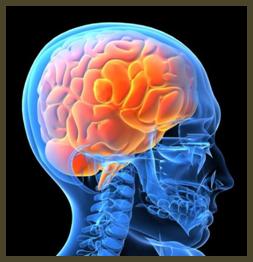 Brain damage: Long term drinking can result in permanent brain damage, including destruction and shrinkage of the brain cells affecting motor skills, coordination, temperature regulation, sleep, mood, learning, memory, problem solving, attention, and personality changes. The liver damage that we discussed above can cause brain problems. One of the liver’s main duties is removing toxic material from the body. However, if long term drinking has led to liver disease, toxic materials are permitted to travel to the brain causing serious and possibly fatal brain problems, including sleep issues, mood and personality changes, anxiety, depression, shortened attention span, coordination problems, and ultimately coma and death. In some cases, a liver transplant would be required to improve the functioning of the brain.
Brain damage: Long term drinking can result in permanent brain damage, including destruction and shrinkage of the brain cells affecting motor skills, coordination, temperature regulation, sleep, mood, learning, memory, problem solving, attention, and personality changes. The liver damage that we discussed above can cause brain problems. One of the liver’s main duties is removing toxic material from the body. However, if long term drinking has led to liver disease, toxic materials are permitted to travel to the brain causing serious and possibly fatal brain problems, including sleep issues, mood and personality changes, anxiety, depression, shortened attention span, coordination problems, and ultimately coma and death. In some cases, a liver transplant would be required to improve the functioning of the brain.- Pancreas damage (pancreatitis): The pancreas is an important organ in the complex process of digestion and metabolism. Pancreatitis, or inflammation of the pancreas, is often caused by heavy alcohol use and can lead to abdominal pain, nausea and vomiting, fever, rapid heart rate, diarrhea and sweating. Long term pancreatitis can lead to diabetes or death.
- Increased cancer risk: The risk of breast, colon, rectal, liver, mouth, and throat cancers is increased by long term alcohol use. For those who drink and smoke, cancer risks are significantly higher.
- Stomach and intestinal ulcers
- Weakened immunity: Long term alcohol users are less able to fight off infectious diseases like pneumonia, tuberculosis, and HIV, and even cancer.
- Sexual problems: Men experience reduced testosterone levels, male breast enlargement, testicular shrinkage, and impotence. Women experience menstrual issues, infertility, and reduced sex drive.
- Fetal Alcohol Syndrome: If a pregnant woman uses alcohol, the developing child could be seriously damaged. Problems include birth defects and many physical, learning, and behavioral problems.
- Addiction: Long term drinking can lead to addiction, a strong craving for alcohol despite its many negative consequences.
- Tolerance: Increased amounts of alcohol are required to achieve the same effects.
- Withdrawal: The sudden termination of drinking could lead to severe anxiety, tremors, hallucinations and convulsions.1,2,4,7

MARIJUANA
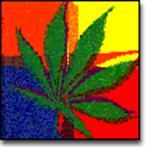 By the time they graduate from high school, about 40% of young people will have tried marijuana. In our country, marijuana is the most widely used illicit drug. While many believe marijuana is harmless, the use of this illicit drug has many negative health, safety, social, learning, economic, and behavioral impacts.
By the time they graduate from high school, about 40% of young people will have tried marijuana. In our country, marijuana is the most widely used illicit drug. While many believe marijuana is harmless, the use of this illicit drug has many negative health, safety, social, learning, economic, and behavioral impacts.
Marijuana comes from the hemp plant, otherwise known as cannabis sativa. The main active ingredient in marijuana is THC (delta-9-tetrahydrocannabinol). THC binds with and overstimulates cannabinoid receptors on nerve cells in the brain, creating the high feeling associated with marijuana use. Cannabinoid receptors are located in the parts of the brain that affect pleasure, judgment, memory, learning, thought, concentration, perception, and coordinated movement. As with many other drugs of abuse, THC acts on the brain’s reward system, causing the brain to release dopamine. A major concern is that THC levels in marijuana have risen greatly in the last 30 or more years. Many parents and grandparents may not realize that today’s marijuana is much more potent and dangerous than the marijuana they may have used when they were young.8,9,10,11
The short term effects of using marijuana are as follows:
 Impaired ability to drive safely: Even a moderate dose of marijuana can degrade judgment, alertness, concentration, coordination, balance, posture, reaction time, decision making, ability to judge distance, and perception. When combined with alcohol, the dangers associated with driving are even greater. Of those who die in motor vehicle crashes, one in seven has marijuana in his system, often in combination with alcohol and other drugs.
Impaired ability to drive safely: Even a moderate dose of marijuana can degrade judgment, alertness, concentration, coordination, balance, posture, reaction time, decision making, ability to judge distance, and perception. When combined with alcohol, the dangers associated with driving are even greater. Of those who die in motor vehicle crashes, one in seven has marijuana in his system, often in combination with alcohol and other drugs. - Poor judgment and decision making: Marijuana use can lead to the bad choice of attempting to drive when one’s ability to drive safely is impaired, or engaging in risky sexual behaviors.
- Impaired memory and learning: Marijuana impairs the ability to form new memories by altering the way information is processed by the brain. Some research shows that attention, memory, and learning can be affected for days, if not weeks, after using marijuana.
- Distorted Perception: The ability to perceive sights, sounds, and touch is affected. Marijuana can create the sensation that time is passing slowly.
- Sedation: Lethargy and sleepiness are common.
- Eye redness: A result of expansion of blood vessels in the eyes.
- Increased appetite
 Mental health problems: For some users, marijuana may cause anxiety, fear, panic, distrust, depression, and thoughts of suicide in adolescents. High doses can cause hallucinations, delusions, and loss of a sense of personal identity.
Mental health problems: For some users, marijuana may cause anxiety, fear, panic, distrust, depression, and thoughts of suicide in adolescents. High doses can cause hallucinations, delusions, and loss of a sense of personal identity.- Heart problems: There is some limited evidence that the likelihood of heart attack is increased by four times in the first hour after smoking marijuana. Heart rate increases (possibly doubling), blood pressure increases, and the blood’s ability to carry oxygen is reduced.
- Burning of throat, coughing, and dry mouth: Smoking 3-4 marijuana joints can have the same effect as smoking 20 cigarettes.
- Pregnancy Problems: Some children of women who used marijuana when they were pregnant suffer effects that may indicate problems with brain development. Some of these children have learning difficulties to include reduced attention and memory and problem solving skills, and these children may have more behavioral problems as well.8,9,10,11
The long term effects of using marijuana are as follows:
- Respiratory Problems: Frequent users experience respiratory problems similar to cigarette smokers—daily cough, more frequent chest illnesses, greater risk of respiratory infections, and obstructed airways.
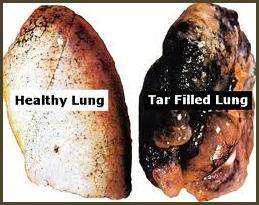 Cancer: Marijuana smoke may have up to 70% more carcinogens, or cancer causing agents, than cigarettes, and therefore, may cause cancer of the respiratory track and lungs. Also, marijuana users usually inhale deeper and hold the smoke longer in their lungs, increasing the danger associated with marijuana use as well. There is inconclusive evidence that long term marijuana use may also cause cancer of the neck and head. In one study, the risk of these cancers was two to three times more likely in marijuana smokers. A joint contains 400 known chemicals and has four times more cancer-causing tar than a filtered cigarette.
Cancer: Marijuana smoke may have up to 70% more carcinogens, or cancer causing agents, than cigarettes, and therefore, may cause cancer of the respiratory track and lungs. Also, marijuana users usually inhale deeper and hold the smoke longer in their lungs, increasing the danger associated with marijuana use as well. There is inconclusive evidence that long term marijuana use may also cause cancer of the neck and head. In one study, the risk of these cancers was two to three times more likely in marijuana smokers. A joint contains 400 known chemicals and has four times more cancer-causing tar than a filtered cigarette.- Immune system impairment: Studies on animals and some limited studies on humans indicate that marijuana use may have a negative effect on the immune system; however, more research is needed in this area.
- Brain issues: The long term effects of marijuana on the structure and function of the brain are not well-known, and studies have been inconsistent. Part of the problem in determining the long term impact of marijuana use on the brain is that it is difficult to find significant numbers of long term marijuana users who have not also abused alcohol, a drug that has many negative effects on the brain. One study showed that the ability to recall words from a list after about four weeks was impaired, while another study indicated that the impairments to the brain accumulate and ultimately affect critical life skills.
- Mental health issues: Depression, anxiety, lack of motivation, irritability, aggressive behavior, and discipline problems have all been associated with long term use of marijuana. Some studies have indicated a link between long term marijuana use and the development of psychosis, a loss of contact with reality that usually includes false beliefs about what is taking place or who one is, and seeing or hearing things that aren’t there. In one study, some adults who used marijuana as teens were more likely to develop psychosis. For some people with schizophrenia, marijuana can worsen their illness.
 Learning and memory impairment: Marijuana has a negative impact on attention, learning, and memory that can last for weeks. Therefore, if a person is a frequent user of marijuana, that person may be operating at a reduced mental level most of the time. The longer a person uses marijuana, the further behind that person will become in acquiring knowledge and skills associated with school, work, and social functioning. Studies have consistently shown that marijuana use is associated with reduced educational achievement to include lower grades and graduation rates.
Learning and memory impairment: Marijuana has a negative impact on attention, learning, and memory that can last for weeks. Therefore, if a person is a frequent user of marijuana, that person may be operating at a reduced mental level most of the time. The longer a person uses marijuana, the further behind that person will become in acquiring knowledge and skills associated with school, work, and social functioning. Studies have consistently shown that marijuana use is associated with reduced educational achievement to include lower grades and graduation rates. - Social Life and Work Issues: In one study that examined current heavy users of marijuana as well as former heavy users, the majority reported that their marijuana use had a negative impact on their career achievements and income, social lives, and physical and mental health. Several studies have indicated that marijuana smoking is related to more accidents and injuries at work, more missed workdays, and more job turnover.
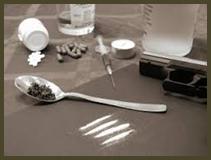 Abuse of other drugs: Many of those using other illegal drugs used marijuana first. Some evidence indicates that the earlier a person starts using marijuana, the more likely he will be to become dependent on other illegal drugs and to ultimately need drug treatment. Also, sometimes marijuana is combined with other drugs, like crack cocaine, without the user’s knowledge.
Abuse of other drugs: Many of those using other illegal drugs used marijuana first. Some evidence indicates that the earlier a person starts using marijuana, the more likely he will be to become dependent on other illegal drugs and to ultimately need drug treatment. Also, sometimes marijuana is combined with other drugs, like crack cocaine, without the user’s knowledge.- Addiction: Some people who use marijuana develop compulsive use behaviors. These people have difficulty controlling their use of marijuana even though it causes problems with family, school, work, and recreational activities. They may continue use of marijuana even though they develop marijuana-related health problems, such as a smoker’s cough. Research shows that the earlier teens start using marijuana, the more likely they are to become dependent on marijuana or other illicit drugs later in life.
- Withdrawal: Some heavy users may develop withdrawal symptoms, similar to nicotine withdrawal, that make it difficult to stop using marijuana. Symptoms might include craving, irritability, anxiousness, aggression, and sleep disturbances.
- Tolerance: The Diagnostic and Statistical Manual of Mental Disorders (DSM) reports that tolerance may be present with some long term users of marijuana.8,9,10,11,12
ILLICIT USE OF PRESCRIPTION DRUGS
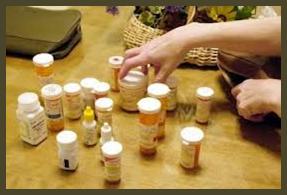 Prescription drugs taken under the supervision of a doctor can provide healing and comfort for patients suffering from a wide range of disorders including pain, anxiety, or sleep disorders. However, some people take prescription medications without a prescription in order to obtain a sought-after feeling, or high, or other experience. While the most widely used illicit drug is marijuana, the second is prescription medications taken without a prescription. This use of prescription drugs for non-medical purposes is illegal and can have dangerous consequences for those who participate. There are three classes of prescription drugs that are most commonly abused: opioids, central nervous system (CNS) depressants, and stimulants.13,14,15
Prescription drugs taken under the supervision of a doctor can provide healing and comfort for patients suffering from a wide range of disorders including pain, anxiety, or sleep disorders. However, some people take prescription medications without a prescription in order to obtain a sought-after feeling, or high, or other experience. While the most widely used illicit drug is marijuana, the second is prescription medications taken without a prescription. This use of prescription drugs for non-medical purposes is illegal and can have dangerous consequences for those who participate. There are three classes of prescription drugs that are most commonly abused: opioids, central nervous system (CNS) depressants, and stimulants.13,14,15
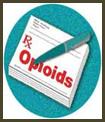 Opioids reduce the brain’s perception of pain and, therefore, are prescribed for patients seeking relief from pain. Those who abuse opioids do so to relieve pain or to experience a sense of euphoria. These medications are either taken by mouth, or they are ground into a powdered form and snorted or injected to experience an even more elevated sense of euphoria. Several of the most commonly prescribed pain medications, also known as prescription narcotics, are as follows:
Opioids reduce the brain’s perception of pain and, therefore, are prescribed for patients seeking relief from pain. Those who abuse opioids do so to relieve pain or to experience a sense of euphoria. These medications are either taken by mouth, or they are ground into a powdered form and snorted or injected to experience an even more elevated sense of euphoria. Several of the most commonly prescribed pain medications, also known as prescription narcotics, are as follows:
 Hydrocodone (Vicodin, Lortab, or Norco) is commonly prescribed for pain related to injury or dental pain.
Hydrocodone (Vicodin, Lortab, or Norco) is commonly prescribed for pain related to injury or dental pain.- Oxycodone (Oxycontin or Percocet)
- Morphine (Kadian or Avinza) is used for severe pain, possibly before and after surgery.
- Codeine (Tylenol #3 or Robitussin AC) is used to relieve mild pain or to reduce coughing.
The short term effects of opioids are as follows:
- Slowed brain activity, drowsiness
- Mental confusion, poor judgment and decision making
- Nausea
- Constipation
- Depressed breathing
- Euphoric feeling
- Overdose can lead to respiratory depression and death. Also, taking opioids with alcohol or other drugs increases the risk of respiratory depression and death.
The long term effects of opioids are as follows:
- Addiction: Highly addictive, causing uncontrollable and compulsive desire for these medications despite adverse consequences.
- Tolerance: Users need to take larger doses of medication to achieve the same effect.
- Withdrawal symptoms: When use of the drug is stopped abruptly, symptoms can include restlessness, muscle and bone pain, diarrhea, vomiting, difficulty sleeping, cold flashes, and involuntary leg movements.13,14,15
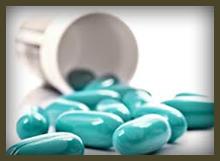 Central Nervous System (CNS) Depressants, often referred to as tranquilizers and sedatives, slow brain activity and are used to treat anxiety and sleep problems. Some of the most common medications in this category are:
Central Nervous System (CNS) Depressants, often referred to as tranquilizers and sedatives, slow brain activity and are used to treat anxiety and sleep problems. Some of the most common medications in this category are:
- Benzodiazepines—Valium and Xanax are commonly used to treat anxiety and acute stress, while Ativan and ProSom are used to treat sleep disorders.
- Non-benzodiazepine sleep medications (Ambien, Lunesta, and Sonata)
- Barbiturates (Mebaral, Nembutal and Luminal Sodium) are used less often than benzodiazepines because of their greater risk of overdose. However, they are used in surgery and for seizure disorders.
The short term effects of CNS depressants are as follows:
- Drowsy or calming effect
- Lack of coordination
- If CNS depressants are used in conjunction with other depressants, like alcohol, pain killers, and cold or allergy medications, heart rhythm will be affected, respiration will be slowed and death can result
The long term effects of CNS depressants are as follows:
 Addiction: Highly addictive, causing uncontrollable and compulsive desire for these medications despite adverse consequences.
Addiction: Highly addictive, causing uncontrollable and compulsive desire for these medications despite adverse consequences.- Tolerance: Users need to take larger doses of medication to achieve the same effect.
- Withdrawal symptoms: When use is abruptly reduced or stopped, the slowed brain could rebound causing a life-threatening seizure. Withdrawal should be conducted under a doctor’s supervision.13,14,15
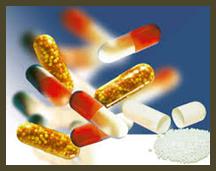 Stimulants are used to treat attention-deficit hyperactivity disorder (ADHD), narcolepsy (a sleep disorder), and depression when other treatments have not been effective. These medications can be taken by mouth, or can be crushed and then snorted. Methamphetamine, an illegally produced drug, is a highly addictive and powerful stimulant. While “Meth” is not a prescription drug, it is included in this section because it is a stimulant. Methamphetamine is normally used in a powder form and is snorted or injected, but it can be taken by mouth or smoked as well.
Stimulants are used to treat attention-deficit hyperactivity disorder (ADHD), narcolepsy (a sleep disorder), and depression when other treatments have not been effective. These medications can be taken by mouth, or can be crushed and then snorted. Methamphetamine, an illegally produced drug, is a highly addictive and powerful stimulant. While “Meth” is not a prescription drug, it is included in this section because it is a stimulant. Methamphetamine is normally used in a powder form and is snorted or injected, but it can be taken by mouth or smoked as well.
- Dextroamphetamines (Adderall and Dexedrine) and Methylphenidate (Ritalin and Concerta) are prescription medications used to treat ADHD, narcolepsy and occasionally depression.
- Methamphetamine is an illegally manufactured drug used to get high.
The short term effects of stimulants are as follows:
- Increased alertness, attention, and energy
- Impaired judgment
- Feelings of euphoria
- Increased blood pressure and heart rate, constriction of blood vessels, and opening of breathing passages
- Hostility or paranoia with high doses or repeated use in a short time period
- Dangerously high body temperature, irregular heart beat, heart failure, or seizure with high doses
- Dangerously high blood pressure and irregular heart beat when combined with over-the-counter cold medications. Should not be used with other medications unless prescribed by a doctor.
The long term effects of stimulants are as follows:
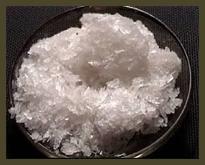 Addiction: Addictive, causing uncontrollable and compulsive desire for these medications despite adverse consequences. Methamphetamine is highly addictive, and long term users can experience anxiety, confusion, insomnia, mood disturbances, memory loss, severe dental problems, weight loss, and violent behavior. Also psychotic symptoms like paranoia, hallucinations, and delusions can sometimes last for months or possibly years after use of methamphetamine is stopped.
Addiction: Addictive, causing uncontrollable and compulsive desire for these medications despite adverse consequences. Methamphetamine is highly addictive, and long term users can experience anxiety, confusion, insomnia, mood disturbances, memory loss, severe dental problems, weight loss, and violent behavior. Also psychotic symptoms like paranoia, hallucinations, and delusions can sometimes last for months or possibly years after use of methamphetamine is stopped.- Tolerance: With methamphetamine, tolerance may develop, requiring larger doses or more frequent use to maintain the same pleasurable effect.
- Withdrawal symptoms: When use of the drug is stopped abruptly, symptoms can include fatigue, depression, disturbed sleep, paranoia, aggression, and craving for the drug.12,13,14,15,16
Over-the-Counter (OTC) Medications, including Antihistamines
While we have focused in this section on the non-medical use of prescription medications, it is important to realize that using non-prescription OTC drugs to get high can have very dangerous consequences as well. Those abusing OTC drugs may take higher than recommended doses or may take them with alcohol or other drugs to increase their psychoactive effects. Using OTC cough and cold medications, containing dextromethorphan and antihistamines, for their psychotic effects can have the following dangerous consequences:
- Impaired motor skills, dizziness, drowsiness
- Blurred/double vision
- Numbness
- Nausea/vomiting
- Increased heart rate and blood pressure, irregular heartbeat, seizures
- Mental/mood changes, confusion, hallucinations
- Depressed breathing, leading to reduced oxygen to the brain and possible brain damage, when used in combination with decongestants
- Possible addiction14,34
COCAINE
 Cocaine is a powerful central nervous system stimulant that can be highly addictive. Cocaine increases levels of the neurotransmitter dopamine which is associated with pleasure in the brain’s reward system. These increased dopamine levels lead to the euphoric feelings that make cocaine so incredibly addictive. Cocaine is produced from the leaves of the coca plant and comes in a powdered form. Cocaine enters the bloodstream through tissues in the nose when it is inhaled or snorted, or directly into the bloodstream when it is injected in a solution of water. Crack is a form of cocaine that is smoked, permitting cocaine to enter the bloodstream through the lungs. Crack is a solid, rock-like form of cocaine that is made from heating cocaine with other chemicals.12,17,18,19
Cocaine is a powerful central nervous system stimulant that can be highly addictive. Cocaine increases levels of the neurotransmitter dopamine which is associated with pleasure in the brain’s reward system. These increased dopamine levels lead to the euphoric feelings that make cocaine so incredibly addictive. Cocaine is produced from the leaves of the coca plant and comes in a powdered form. Cocaine enters the bloodstream through tissues in the nose when it is inhaled or snorted, or directly into the bloodstream when it is injected in a solution of water. Crack is a form of cocaine that is smoked, permitting cocaine to enter the bloodstream through the lungs. Crack is a solid, rock-like form of cocaine that is made from heating cocaine with other chemicals.12,17,18,19
The short term effects of cocaine are as follows:
- Euphoric feelings, increased energy, excited speech, mental alertness, and impaired judgment
- Temporary decrease in need for food or sleep
- Tremors, vertigo, and muscle twitching
- Dilated pupils
- Increased body temperature or fever
- Mental complications including restlessness, irritability, anxiety, panic, and paranoia. Large doses can cause bizarre, erratic, and violent behavior. Binge use can result in losing touch with reality and auditory hallucinations.
- Gastrointestinal problems including abdominal pain, nausea, and vomiting
- Kidney problems including sudden kidney failure
- Cardiovascular problems including constricted blood vessels, increased heart rate, irregular heart beat, increased blood pressure, and heart attack
- Brain issues including headaches, seizures, strokes, and coma
- Cessation of normal breathing (respiratory arrest)
- Sudden death can occur due to the heart and brain problems highlighted above in the case of an overdose. In rare cases, sudden death can occur on a first use or on a subsequent use.
- Cocaine used with alcohol can cause a dangerous interaction resulting in sudden death
- Children born to mothers who used cocaine during pregnancy can have lower weight, height, and smaller heads. They may also have problems with thinking, information processing, and attention.17,18,19
The long term effects of cocaine are as follows:
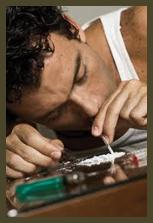 Snorting cocaine can lead to a loss of smell, runny nose, nosebleeds, problems with swallowing, and hoarseness.
Snorting cocaine can lead to a loss of smell, runny nose, nosebleeds, problems with swallowing, and hoarseness.- Injecting cocaine with shared contaminated needles can lead to an increased risk of HIV/AIDS and hepatitis.
- Decreased appetite, malnourishment, weight loss
- Impaired sexual function in men and women
- The intense feelings of well-being generated by using cocaine make it powerfully addictive. Those addicted experience an uncontrollable and compulsive desire for cocaine despite adverse consequences. It is nearly impossible for a potential user to understand just how difficult it will be to withstand the desire to continue using this drug. Even after long periods of non-use, a person who has used cocaine will feel strong cravings for the drug if placed in a situation that brings back the pleasurable memories of using cocaine.
- Tolerance may develop with repeated use; higher doses or more frequent use of the drug are required to produce the same pleasurable results. However, for some of the negative side effects, like convulsions and anxiety, the same amount of cocaine use will generate even greater negative effects as the user becomes more sensitive to the same amount of the drug.
- Withdrawal symptoms are more psychological than physiological. These symptoms might include difficulty concentrating, inability to feel pleasure, and increased craving for cocaine. Physical symptoms might include aches, pains, tremors, and chills.17,18,19
HEROIN
 Heroin is a highly addictive illegal drug. While treated as a separate drug category, this drug is classified as an opioid and is processed from morphine which is extracted from poppy plants. Heroin is usually injected but can be smoked or snorted as well. In the brain, heroin is converted to morphine.20,21,22
Heroin is a highly addictive illegal drug. While treated as a separate drug category, this drug is classified as an opioid and is processed from morphine which is extracted from poppy plants. Heroin is usually injected but can be smoked or snorted as well. In the brain, heroin is converted to morphine.20,21,22
The short term effects of heroin are as follows:
- Increased feeling of pleasure, a surge of pleasurable sensations
- Dry mouth, skin warmness, small pupils, watery eyes, runny nose
- Depressed breathing that sometimes can result in death
- Slowed heart rate
- Arms and legs feel heavy
- Drowsiness, relaxation, and reduced mental function
- Nausea, vomiting
- Severe itching
- If injected, users risk HIV/AIDS, hepatitis, and other diseases. Also, unprotected sex with heroin abusers could lead to disease as well.
- Risk of overdose or death. Because heroin is mixed, or “cut,” with other substances, the user will not know the actual strength of the drug and what other potentially dangerous drugs have been mixed with the heroin. Some of the substances that are mixed with heroin do not readily dissolve and may clog the blood vessels leading to the brain, liver, kidneys, and lungs causing permanent damage to these organs.
- If the user is pregnant, the baby may suffer from low birth weight and developmental delay, or could be spontaneously aborted.20,21,22
The long term effects of heroin are as follows:
- Scarred and/or collapsed veins
- Infection of the heart valves and lining of blood vessels
- Liver or kidney disease
- Abscesses (boils) and other soft tissue infections at the injection sites
- Lung problems, decreased respiration, and possible pneumonia or tuberculosis
- If the user is pregnant, the newborn child may suffer from low birth weight and developmental delay.
 Powerfully addictive drug. Those addicted experience an uncontrollable and compulsive craving for heroin despite adverse consequences, and they experience brain changes as well. Users gradually find that their primary purpose in life becomes seeking and using heroin. For those who are able to stop taking heroin, even after the very challenging withdrawal symptoms have gone, some still experience a strong craving for heroin for years.
Powerfully addictive drug. Those addicted experience an uncontrollable and compulsive craving for heroin despite adverse consequences, and they experience brain changes as well. Users gradually find that their primary purpose in life becomes seeking and using heroin. For those who are able to stop taking heroin, even after the very challenging withdrawal symptoms have gone, some still experience a strong craving for heroin for years.- Drug tolerance. Users must continue to use more heroin to achieve the same effect.
- Withdrawal symptoms can be severe when use of heroin is stopped or reduced rapidly. Withdrawal symptoms may include drug craving, vomiting, diarrhea, cold flashes, pain in muscles and bones, restlessness, sleeplessness, and leg movements. Some users can experience withdrawal symptoms for many months. If the user is in poor health, sudden withdrawal by heavy users could occasionally be fatal.20,21,22
HALLUCINOGENS
Hallucinogens cause hallucinations and can have a very negative effect on a person’s ability to properly perceive reality. A person using hallucinogens may hear sounds, see images, and feel sensations that appear to be real but are not. The user’s perception of time and motion may be distorted, and some hallucinogens may cause users to experience rapid emotional changes. Hallucinogens include LSD, mescaline, psilocybin, and PCP. The National Survey on Drug Use and Health also includes Ecstasy in this category. Some of the most common hallucinogens are described below:
- LSD (lysergic acid diethylamide) is the most well-known, most potent, and most frequently abused hallucinogen. LSD is manufactured from lysergic acid which is found in a fungus that grows on rye and other grains. LSD is produced as a crystal, then crushed into a powder, and mixed with other substances to produce tablets or thin squares of gelatin. It can also be dissolved and applied to absorbent paper that is divided into very small pieces before it is consumed orally.
- Mescaline is found in a small, spineless cactus plant called Peyote and can be produced chemically as well. Small parts of the top of the cactus are cut and dried and then are chewed or soaked in water to produce a bitter liquid. Some users boil the cactus to prepare a tea.
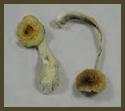 Psilocybin is obtained from mushrooms and is consumed orally. To hide the bitter taste, some users boil the mushrooms to make a tea or add the mushrooms to other foods.
Psilocybin is obtained from mushrooms and is consumed orally. To hide the bitter taste, some users boil the mushrooms to make a tea or add the mushrooms to other foods.- PCP (phencyclidine) is considered to be a dissociative drug because it distorts perceptions of sight and sound and produces feelings of detachment or dissociation from the environment and from one’s self. PCP is a white crystalline powder that dissolves in water or alcohol. It is frequently mixed with dyes and can be found as a colored powder or as a tablet or capsule. It can be snorted, smoked, or taken orally.
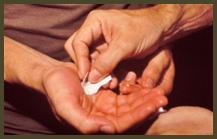 Ecstasy (MDMA, 3, 4 methylenedioxymethamphetamine) is an illegal, synthetically manufactured drug that acts as a hallucinogen and as a stimulant. The drug is manufactured as tablets or capsules that may contain other drugs that greatly increase the dangers associated with taking MDMA.23,24,25
Ecstasy (MDMA, 3, 4 methylenedioxymethamphetamine) is an illegal, synthetically manufactured drug that acts as a hallucinogen and as a stimulant. The drug is manufactured as tablets or capsules that may contain other drugs that greatly increase the dangers associated with taking MDMA.23,24,25
People who use hallucinogens can suffer highly variable and unpredictable effects, making their use very dangerous. Users can experience effects that are different from those experienced by other users or from the experiences they have encountered with previous usage. The amount of the drug that is taken, the user’s personality and mood, and the location where the drugs are used can all impact the effects that will be experienced.24,25
The short term effects associated with using hallucinogens are as follows:
- Hallucinations and delusions—users see images, hear sounds, feel sensations, and hold strong beliefs that seem real but are not.
- Sense of time and self is altered.
- Rapid, intense emotional swings from fear to euphoria. Users may simultaneously feel several different emotions. Feelings of panic, anxiety, despair, a fear of losing control, and a fear of insanity or death are common.
- Dilated pupils
- Elevated body temperature
- Increased heart rate and blood pressure
- Sweating, loss of appetite, and sleeplessness
- Dry mouth
- Nausea
- Tremors
- Loss of coordination and numbness
- Psilocybin (mushrooms) may cause muscle relaxation or weakness, nausea, vomiting, and drowsiness.
- Ecstasy generates feelings of increased energy, euphoria, emotional closeness, and empathy.
- PCP causes feelings of strength, power, invulnerability, and a numbing effect on the mind.
- High doses of PCP can result in a drop in blood pressure, pulse rate and respiration causing nausea and vomiting, blurred vision, a loss of balance, dizziness, seizures, coma, and death.
- PCP users may become violent or suicidal.23,24,25
The long term effects associated with using hallucinogens are as follows:
 Drug experience flashbacks may occur days, or more than a year, after drug use. These flashbacks can cause problems with functioning socially or at work.
Drug experience flashbacks may occur days, or more than a year, after drug use. These flashbacks can cause problems with functioning socially or at work.- Psychosis, a loss of the ability to recognize reality and rational thinking, may develop. Some may experience mood swings, depression, and hallucinations for years after the drug use.
- Memory loss
- PCP and Ecstasy can be addictive, resulting in intense craving and compulsive drug seeking despite harmful consequences. LSD is not considered addictive.
- LSD, Psilocybin, and Ecstasy users can develop drug tolerance requiring greater doses to achieve the same result. Since the drug effects are unpredictable, taking larger doses is very dangerous.
- Withdrawal symptoms can occur when use of Ecstasy or PCP is stopped or reduced rapidly.
- The long term effects of mescaline are not well known.23,24,25
INHALANTS
Inhalants are volatile substances—that is, they have a tendency to vaporize, and their dangerous chemical vapors cause mind-altering effects when they are inhaled, or breathed into the body. Unfortunately, many people do not realize that inhaling the chemical vapors associated with these common products can cause serious health problems. For the drug categories addressed earlier, use typically increases with age during the teen years. With inhalants, however, younger teens are more likely to use than older teens. Inhalants can be divided into several categories:
- Volatile Solvents are liquids that are so volatile that they convert into a vapor or gas form at room temperature. Some of the most common solvents are felt tip markers, correction fluids, lighter fluids, paint removers and thinners, gasoline, glue, degreasers, and dry cleaning fluids.
 Aerosols are sprays containing propellants and solvents that can be inhaled. Some common aerosols are included in spray deodorants, hair sprays, computer cleaning sprays, spray paints, vegetable oil sprays, and fabric protection sprays.
Aerosols are sprays containing propellants and solvents that can be inhaled. Some common aerosols are included in spray deodorants, hair sprays, computer cleaning sprays, spray paints, vegetable oil sprays, and fabric protection sprays. - Gases include the gases used in home and commercial products as well as gases used in medical anesthetics. Some of the most common gases used as inhalants include butane lighters, propane tanks, refrigerant gases, whipped cream dispensers, and the medical gases chloroform and nitrous oxide (laughing gas).
- Nitrites may be sold in small bottles as video head cleaner, leather cleaner, or liquid aroma. Like solvents, nitrites easily evaporate or vaporize. While the inhalants previously discussed act primarily on the central nervous system, nitrites act to dilate blood vessels and relax muscles.26,27
The short term effects of inhalant use are as follows:
- Euphoria
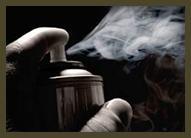 Central nervous system depression:
Central nervous system depression:- Drowsiness
- Dizziness
- Loss of coordination
- Slurred speech
- Blurred vision
- Impaired judgment, confusion, and lowered inhibitions
- Anxiety, agitation, irritability, and belligerence
- Loss of sensation or consciousness
- Hallucinations and delusions
- Impaired social, school, or occupational functioning
- Headache, convulsions, seizures, or coma
- Nausea and vomiting, possibly choking from inhaling vomit
- Irregular heartbeat, heart failure, and even death if highly concentrated chemicals are sniffed repeatedly (known as Sudden Sniffing Death)
- Asphyxiation (a lack of oxygen) can cause death as inhalants displace oxygen in the lungs.
- Suffocation deaths can be caused by placing one’s head in a plastic bag when inhaling.
- Use during pregnancy can cause developmental problems with the fetus.
- Nitrites are used to increase sexual pleasure. They dilate and relax blood vessels, increase heart rate, and cause a sensation of heat.26,27
The long term effects of inhalant use are as follows:
 Serious and possibly irreversible injury to the brain and nervous system may occur. Long term use of inhalants causes damage to the parts of the brain that control thinking, movement, vision and hearing. The protective covering around the nerve fibers in the brain and nervous system can be damaged, making it difficult or impossible for the brain to send messages to our bodies.
Serious and possibly irreversible injury to the brain and nervous system may occur. Long term use of inhalants causes damage to the parts of the brain that control thinking, movement, vision and hearing. The protective covering around the nerve fibers in the brain and nervous system can be damaged, making it difficult or impossible for the brain to send messages to our bodies.- Damage to the heart, lungs, liver, kidneys, hearing, and bone marrow
- Long term users can develop addiction.
- Withdrawal symptoms have been reported by some users.
- Tolerance has been reported among heavy users.12,26,27
Stomach damage and associated weight loss/gain and nutritional factors caused by the use of alcohol and drugs.
The short term effects of many drugs including alcohol, opioids, cocaine, heroin, hallucinogens, and inhalants include nausea and vomiting. In the long term, use of drugs can cause severe stomach problems, weight loss, and poor nutrition. Abuse of alcohol can cause stomach ulcers and injury to the liver and pancreas, which may lead to stomach pain, nausea, vomiting, and loss of appetite. Withdrawal from opioids can cause vomiting and diarrhea. Addiction to methamphetamine is well known for causing weight loss. Long term effects of cocaine use include decreased appetite, malnourishment, and weight loss. Withdrawal from heroin can be accompanied by vomiting and diarrhea. Also, and very importantly, once a person becomes addicted to alcohol or drugs, the craving for alcohol or drugs becomes the dominant force in that person’s life. The craving is so strong that the addicted person devotes his/her entire life to acquiring the next drink or the next dose of drugs. Food, a basic need for most people, becomes a much lower level need for the addicted person, and consequently, weight loss and poor nutrition often accompany alcohol and drug addiction.
Comparison of the effects of different types of drugs, specifically, antihistamines, pain relievers, tranquilizers, hallucinogens, stimulants, and narcotics.
| Drug | Loss of Ability to Drive Safely (Impaired Cognition, Poor Judgment, Reduced Mental Function) |
Short Term Problems (Heart, Brain, and/or Lung Problems) |
Long Term Problems (Organ Damage and/or Mental Illness) |
A D D I C T I O N |
T O L E R A N C E |
W I T H D R A W A L |
Death |
| Alcohol | X | X | X | X | X | X | X |
| Marijuana | X | X | X | X | X | X | |
| Psychotherapeutics (Pain Relievers, Tranquilizers, Sedatives, Stimulants, and OTC drugs such as Antihistamines) |
X | X | X | X | X | X | X |
| Cocaine (including Crack) | X | X | X | X | X | X | X |
| Heroin | X | X | X | X | X | X | X |
| Hallucinogens (LSD, Peyote, Mushrooms, PCP, Ecstasy) | X | X | X | X | X | X | X |
| Inhalants (Nitrous oxide, Amyl Nitrite, Cleaning Fluids, Gasoline, Glue, Spray Paint, Aerosol Sprays) |
X | X | X | X | X | X | X |
 The chart above provides a summary of the short and long term effects of alcohol and illicit drug use that we have just reviewed. It should be obvious that the use of alcohol and illicit drugs impairs the ability to safely operate a motor vehicle. These substances reduce the ability of our brains to function properly and impair our judgment, both critical factors needed to operate a motor vehicle. Alcohol and illicit drugs have short term effects on the heart and/or brain, and many cause problems with the lungs. And for almost all of the drugs, heavy use, overdose, or mixing with alcohol or other drugs could lead to death. Long term use of alcohol and drugs can damage bodily organs, cause disease, and/or cause mental health problems.
The chart above provides a summary of the short and long term effects of alcohol and illicit drug use that we have just reviewed. It should be obvious that the use of alcohol and illicit drugs impairs the ability to safely operate a motor vehicle. These substances reduce the ability of our brains to function properly and impair our judgment, both critical factors needed to operate a motor vehicle. Alcohol and illicit drugs have short term effects on the heart and/or brain, and many cause problems with the lungs. And for almost all of the drugs, heavy use, overdose, or mixing with alcohol or other drugs could lead to death. Long term use of alcohol and drugs can damage bodily organs, cause disease, and/or cause mental health problems.
 One of the most dangerous problems associated with alcohol and drug use is addiction. Addiction is the intense and uncontrollable craving for a substance despite experiencing many adverse consequences associated with the continued use of the substance. For many addicts, acquiring and using drugs becomes their sole purpose in life, and of course, their addiction ruins their lives and the lives of their families and friends. While research shows that all drugs have the capacity to lead to some degree of addiction, alcohol, opioids, methamphetamine, cocaine, and heroin are so powerfully addictive that they routinely ruin the lives of their users. Use of all of these drugs can result in some withdrawal symptoms, and sudden cessation of long term use of drugs like alcohol, CNS depressants, and heroin can cause severe, sometimes life-threatening, withdrawal problems. Finally, long term users of all of these drugs develop some degree of tolerance, requiring increased doses to generate the same effect.
One of the most dangerous problems associated with alcohol and drug use is addiction. Addiction is the intense and uncontrollable craving for a substance despite experiencing many adverse consequences associated with the continued use of the substance. For many addicts, acquiring and using drugs becomes their sole purpose in life, and of course, their addiction ruins their lives and the lives of their families and friends. While research shows that all drugs have the capacity to lead to some degree of addiction, alcohol, opioids, methamphetamine, cocaine, and heroin are so powerfully addictive that they routinely ruin the lives of their users. Use of all of these drugs can result in some withdrawal symptoms, and sudden cessation of long term use of drugs like alcohol, CNS depressants, and heroin can cause severe, sometimes life-threatening, withdrawal problems. Finally, long term users of all of these drugs develop some degree of tolerance, requiring increased doses to generate the same effect.
Synergistic effects of the combination of alcohol and other drugs.
 Research shows that those who consume alcohol are much more likely to also use illicit drugs. For example, about one-third of Americans who are classified as heavy drinkers (those who consume five or more drinks on the same occasion on at least five occasions in the past month) are also consuming illicit drugs. For youths in the 12-17 year age group, about 60% of those classified as heavy drinkers are also using illegal drugs while only about 5% of non-drinkers are using drugs.28
Research shows that those who consume alcohol are much more likely to also use illicit drugs. For example, about one-third of Americans who are classified as heavy drinkers (those who consume five or more drinks on the same occasion on at least five occasions in the past month) are also consuming illicit drugs. For youths in the 12-17 year age group, about 60% of those classified as heavy drinkers are also using illegal drugs while only about 5% of non-drinkers are using drugs.28
As noted earlier, when alcohol and drugs are consumed together, the risk of serious consequences, including death, is significantly increased. If opioids (pain relievers) are used with other depressants, such as alcohol, CNS depressants, and many cold or allergy medications, the heart rhythm can be affected, the breathing can be slowed, and death can result. Also, using cocaine with alcohol can cause a dangerous interaction, leading to heart attack, stroke, or sudden death. The sedative effects of marijuana are increased with alcohol. Also, while some medications are taken in time-released capsules intended to release the drug slowly into the blood stream over time, alcohol can dissolve the time-release coating causing the full dose to be released into the bloodstream immediately.29
Equivalency of drinks. One 12 oz. beer, one 5 oz. glass of wine, or one 1.5 oz shot of 80 proof whiskey. Warning about the multi-shot specialty drinks like Long Island Iced Tea and higher proof drinks.
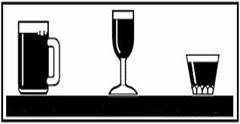 The alcohol content in a standard-sized serving of beer, wine, or liquor is the same. Therefore, it doesn’t make any difference if you drink a shot of liquor (1½ ounces), a glass of wine (5 ounces), or a bottle/can of beer (12 ounces). The negative impacts on your ability to drive safely are the same because the alcohol content of these different drinks is the same. The following chart shows how this works:
The alcohol content in a standard-sized serving of beer, wine, or liquor is the same. Therefore, it doesn’t make any difference if you drink a shot of liquor (1½ ounces), a glass of wine (5 ounces), or a bottle/can of beer (12 ounces). The negative impacts on your ability to drive safely are the same because the alcohol content of these different drinks is the same. The following chart shows how this works:
| Drink Type and Volume | Percent Alcohol | Total Amount of Alcohol |
| Beer - 12 ounces | 5% | 0.6 Ounces |
| Wine - 5 ounces | 12% | 0.6 Ounces |
| Whiskey (80 proof) - 1.5 ounces | 40% | 0.6 Ounces |
A one-and-a-half-ounce shot of whiskey contains 40% alcohol. Forty percent of one-and-a-half ounces yields 0.6 ounces of alcohol. A standard-sized 5-ounce glass of wine contains 12% alcohol. Twelve percent of 5 ounces yields the same 0.6 ounces of alcohol. Finally, a 12-ounce can or bottle of beer contains 5% alcohol. Five percent of 12 ounces again yields 0.6 ounces of alcohol.
 Sometimes drinks are consumed in drinking glasses or plastic cups that are larger than standard size. For example, if 16-ounce plastic party cups are used for mixed drinks, wine, or beer, you will be consuming much more than the standard-sized drink.
Sometimes drinks are consumed in drinking glasses or plastic cups that are larger than standard size. For example, if 16-ounce plastic party cups are used for mixed drinks, wine, or beer, you will be consuming much more than the standard-sized drink.
If a person is drinking multi-shot specialty drinks, like Long Island Iced Teas, or higher proof drinks, large amounts of alcohol can be consumed with a single drink. Also, very high blood alcohol levels can be achieved in short time periods if a person participates in drinking games, especially with hard liquor.
Hard liquor drinks are small and can be consumed quickly without giving any feeling of stomach fullness. It takes a little more time to consume a 12-ounce can or bottle of beer, and a 12-ounce beverage takes up more room in the stomach as well. However, despite being more filling, some people are able to quickly consume multiple beers. The very first drink of any alcoholic beverage starts the impairment process, and multiple drinks can cause very high blood alcohol levels over a very short time period.30,31,32
The Physiological Aspects of Substance Use Disorders - Withdrawal and Tolerance
The information in this section has emphasized that long term use of alcohol and drugs can lead to withdrawal, tolerance and addiction. Withdrawal and tolerance are primarily physiological problems, and addiction is primarily a psychological problem described as an uncontrollable and compulsive craving for alcohol or drugs despite adverse consequences. People who are addicted gradually find that their primary purpose in life becomes seeking and using alcohol and drugs.
It is very dangerous and illegal to drive when under the influence of alcohol or drugs. But as highlighted earlier, even if a person is not behind the wheel, the use of alcohol and illicit drugs places that person at risk for physiological and psychological harm. When the functioning of someone’s body, to include the functioning of the brain, is affected in a negative way, that person has suffered physiological harm. When someone’s ability to think, to reason, and to use the mind is affected in a negative way, that person has suffered psychological harm.
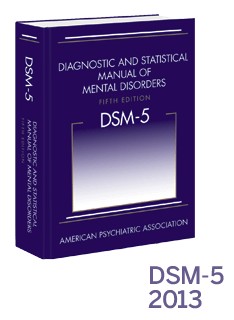 The American Psychiatric Association publishes the Diagnostic and Statistical Manual of Mental Disorders (DSM). Currently in its fifth edition, the DSM-5 was published in 2013. According to the DSM-5, the use of alcohol and illicit drugs can lead to substance use disorders.
The American Psychiatric Association publishes the Diagnostic and Statistical Manual of Mental Disorders (DSM). Currently in its fifth edition, the DSM-5 was published in 2013. According to the DSM-5, the use of alcohol and illicit drugs can lead to substance use disorders.
As described in the DSM-5, a substance use disorder involves the inappropriate or excessive use of alcohol or an illicit drug, or the non-medical use of a prescription medication with the intent to get high. The DSM-5 addresses two major physiological problems associated with the long term use of alcohol and drugs, tolerance and withdrawal. The National Institute on Drug Abuse (NIDA) uses the word “dependence” to describe the situation where the heavy use of alcohol or drugs results in negative withdrawal symptoms when the alcohol or drug use stops or subsides. Tolerance and withdrawal are described as follows:
- Tolerance is the need for increasing amounts of a substance to achieve the same intoxicating effect or experiencing significantly less effect when taking the same amount of a substance. The amount of tolerance that develops depends on the substance that is being taken. For example, people who use large amounts of stimulants and opioids can develop high degrees of tolerance. Eventually, it may take 10 times as much of the drug to generate the same effect. Significant, but lower, levels of tolerance can be developed for alcohol.
- Withdrawal can be diagnosed if a person experiences either of the following:
 A person who has used large amounts of alcohol or illicit drugs over a long period of time may experience negative symptoms when the amount of substance in the blood or tissues declines. These negative symptoms can result in cognitive and physiological problems. Cognitive problems may include impairment in perception, memory, and judgment. Physiological problems may include nausea or other problems affecting the functioning of the body. As with tolerance, the amount of withdrawal experienced varies with the substance being taken.
A person who has used large amounts of alcohol or illicit drugs over a long period of time may experience negative symptoms when the amount of substance in the blood or tissues declines. These negative symptoms can result in cognitive and physiological problems. Cognitive problems may include impairment in perception, memory, and judgment. Physiological problems may include nausea or other problems affecting the functioning of the body. As with tolerance, the amount of withdrawal experienced varies with the substance being taken.- Once a person experiences the negative consequences of withdrawal, he or she may resume drinking or taking drugs in an effort to alleviate the negative consequences experienced as the amount of alcohol or drugs in the body declines.
Warning that this all applies to legal prescription medicines as well as over-the-counter medications, or consult with your doctor for the effect of these drugs on the driving task.
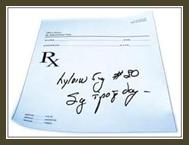 In addition to alcohol and illegal drugs, legal drugs (like prescription and over-the-counter medications) can also have a negative impact on a person’s ability to drive safely. A driver who is impaired by legal drugs can also be convicted of driving under the influence. Drugs, both legal and illegal, impact the central nervous system, which includes the brain and spinal cord, and can have a very negative impact on a person’s ability to drive safely. When legal medications are combined with alcohol or illegal drugs, the negative impacts are compounded, can be very unpredictable, and the potential for crashes is increased. The Office of National Drug Control Policy reports that prescription drugs are the second most widely abused category of drugs; only marijuana is ranked higher.14,30,31,33
In addition to alcohol and illegal drugs, legal drugs (like prescription and over-the-counter medications) can also have a negative impact on a person’s ability to drive safely. A driver who is impaired by legal drugs can also be convicted of driving under the influence. Drugs, both legal and illegal, impact the central nervous system, which includes the brain and spinal cord, and can have a very negative impact on a person’s ability to drive safely. When legal medications are combined with alcohol or illegal drugs, the negative impacts are compounded, can be very unpredictable, and the potential for crashes is increased. The Office of National Drug Control Policy reports that prescription drugs are the second most widely abused category of drugs; only marijuana is ranked higher.14,30,31,33
Earlier in this course, we examined the negative side effects associated with using prescription medications, without a doctor’s prescription, to get high or to experience other pleasurable effects. Obviously those same negative side effects can occur even if those medications are taken under the supervision of your doctor.
Medications can cause the following side effects: drowsiness, an inability to concentrate, confusion, blurred vision, dizziness, a loss of coordination and judgment, a false sense of alertness, depression, slowed heart rate, and forgetfulness. These side effects can have a very negative impact on a person’s ability to safely operate a motor vehicle.31,32,33
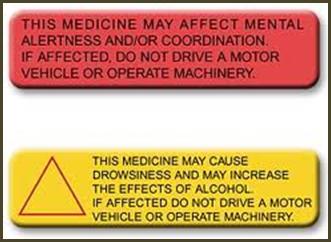 Always follow the directions provided when taking prescription and over-the-counter medications, and be sure to read warning labels to learn of any negative effects that could impact your ability to drive safely. If the warning label on your medication advises that you should not drive when taking the medication, or for a certain number of hours after taking the medication, heed the warning and do not drive until it is safe to do so. Be aware that combinations of medications can cause very unpredictable side effects. When taking a medication for the first time, it is best not to drive until you see what impact the medication will have on you. If you have any questions about the side effects associated with the drugs you are taking, ask your pharmacist or doctor. Also, never drink alcohol while taking medications as this can cause highly unpredictable results.
Always follow the directions provided when taking prescription and over-the-counter medications, and be sure to read warning labels to learn of any negative effects that could impact your ability to drive safely. If the warning label on your medication advises that you should not drive when taking the medication, or for a certain number of hours after taking the medication, heed the warning and do not drive until it is safe to do so. Be aware that combinations of medications can cause very unpredictable side effects. When taking a medication for the first time, it is best not to drive until you see what impact the medication will have on you. If you have any questions about the side effects associated with the drugs you are taking, ask your pharmacist or doctor. Also, never drink alcohol while taking medications as this can cause highly unpredictable results.
Of course, illegal drugs pose great health risks and driving under the influence of illegal drugs is highly dangerous.31,32,33
REVIEW QUESTIONS FOR SECTION 3
The Section Review Questions will help to prepare you for the Final Exam; incorrect answers will not count against you. You must complete the Section Review Questions before moving on to the next section of the course.
0
1. National Institutes of Health, National Institute on Drug Abuse. Alcohol. Available at: http://www.drugabuse.gov/drugs-abuse/alcohol. Retrieved April 25, 2013.
2. Virginia Tech, Campus Alcohol Abuse Prevention Center. Alcohol’s Effects. Available at: http://www.alcohol.vt.edu/Students/Alcohol_effects/index.html. Retrieved April 25, 2013.
3. Michelon P. What is a Cognitive Ability/What are Cognitive Abilities and Skills? Available at: http://sharpbrains.com/blog/2006/12/18/what-are-cognitive-abilities. Retrieved April 25, 2013.
4. National Institutes of Health, National Institute on Alcohol Abuse and Alcoholism. Alcohol’s Effects on the Body. Available at: http://www.alcohol.vt.edu/Students/Alcohol_effects/index.html. Retrieved April 25, 2013.
5. Mayo Clinic. Alcohol poisoning. Available at: http://www.mayoclinic.com/health/alcohol-poisoning/DS00861. Retrieved April 25, 2013.
6. The Partnership at Drugfree.org. Alcohol. Available at: http://www.drugfree.org/drug-guide/alcohol. Retrieved April 25, 2013.
7. National Institutes of Health, National Institute on Alcohol Abuse and Alcoholism. Beyond Hangovers: understanding alcohol’s impact on your health. NIH Pub. No. 10-7604. Bethesda, MD: NIAAA, NIH, DHHS. Reprinted September 2012. Available at: http://pubs.niaaa.nih.gov/publications/Hangovers/beyondHangovers.pdf. Retrieved April 25, 2013.
8. National Institutes of Health, National Institute on Drug Abuse. Drug Facts: Marijuana. Available at: http://www.drugabuse.gov/sites/default/files/marijuana_0.pdf. Retrieved April 25, 2013.
9. National Institutes of Health, National Institute on Drug Abuse. Research Report Series: Marijuana abuse. NIH Pub. No. 12-3859. Bethesda, MD: NIDA, NIH, DHHS. Revised July 2012. Available at: http://www.drugabuse.gov/sites/default/files/rrmarijuana.pdf. Retrieved April 25, 2013.
10. National Institutes of Health, National Institute on Drug Abuse. Marijuana: facts for teens. NIH Pub. No. 10-4037. Bethesda, MD: NIDA, NIH, DHHS. Revised March 2011. Available at: http://www.drugabuse.gov/sites/default/files/teens_marijuana_brochure.pdf. Retrieved April 25, 2013.
11. Office of National Drug Control Policy. Marijuana Myths & Facts: The truth behind 10 popular misperceptions. Available at: https://www.ncjrs.gov/ondcppubs/publications/pdf/marijuana_myths_facts.pdf. Retrieved April 25, 2013.
12. American Psychiatric Association. Diagnostic and Statistical Manual of Mental Disorders. 4th ed. Washington: American Psychiatric Association, 1994.
13. National Institutes of Health, National Institute on Drug Abuse. Research Report Series: Prescription Drugs: Abuse and Addiction. NIH Pub. No. 11-4881. Bethesda, MD: NIDA, NIH, DHHS. Revised October 2011. Available at: http://www.drugabuse.gov/sites/default/files/rrprescription.pdf. Retrieved April 25, 2013.
14. National Institutes of Health, National Institute on Drug Abuse. Drug Facts: Prescription and Over-the-Counter Medications. Available at: http://www.drugabuse.gov/sites/default/files/prescriptions_0.pdf. Retrieved April 25, 2013.
15. National Institutes of Health, National Institute on Drug Abuse. Topics in Brief: Prescription Drug Abuse. Available at: http://www.drugabuse.gov/publications/topics-in-brief/prescription-drug-abuse. Retrieved April 25, 2013.
16. National Institutes of Health, National Institute on Drug Abuse. Research Report Series: Methamphetamine: Abuse and Addiction. NIH Pub. No. 06-4210. Bethesda, MD: NIDA, NIH, DHHS. Revised September 2006. Available at: http://www.drugabuse.gov/sites/default/files/rrmetham.pdf. Retrieved April 25, 2013.
17. WebMD. Cocaine Use and Its Effects. Available at: http://www.webmd.com/mental-health/cocaine-use-and-its-effects. Retrieved April 25, 2013.
18. National Institutes of Health, National Institute on Drug Abuse. Drug Facts: Cocaine. Available at: http://www.drugabuse.gov/sites/default/files/drugfacts_cocaine_final_0.pdf. Retrieved April 25, 2013.
19. National Institutes of Health, National Institute on Drug Abuse. Research Report Series: Cocaine: Abuse and Addition. NIH Pub. No. 10-4166. Bethesda, MD: NIDA, NIH, DHHS. Revised September 2010. Available at: http://www.drugabuse.gov/sites/default/files/rrcocaine.pdf. Retrieved April 25, 2013.
20. WebMD. Heroin. Available at: http://www.webmd.com/a-to-z-guides/heroin-topic-overview. Retrieved April 25, 2013.
21. National Institutes of Health, National Institute on Drug Abuse. Drug Facts: Heroin. Available: http://www.drugabuse.gov/sites/default/files/drugfacts_heroin_final_0.pdf. Retrieved April 25, 2013.
22. National Institutes of Health, National Institute on Drug Abuse. Research Report Series: Heroin: Abuse and Addition. NIH Pub. No. 05-4165. Bethesda, MD: NIDA, NIH, DHHS. Revised May 2005. Available at: http://www.drugabuse.gov/sites/default/files/rrheroin.pdf. Retrieved April 25, 2013.
23. National Institutes of Health, National Institute on Drug Abuse. Drug Facts: MDMA (“Ecstasy”). Available: http://www.drugabuse.gov/sites/default/files/mdma_0.pdf. Retrieved April 27, 2013.
24. National Institutes of Health, National Institute on Drug Abuse. InfoFacts: Hallucinogens: LSD, Peyote, Psilocybin, and PCP. Available: http://www.drugabuse.gov/sites/default/files/hallucinogens09.pdf. Retrieved April 27, 2013.
25. National Institutes of Health, National Institute on Drug Abuse. Research Report Series: Hallucinogens and Dissociative Drugs. NIH Pub. No. 01-4209. Bethesda, MD: NIDA, NIH, DHHS. Printed March 2001. Available at: http://www.drugabuse.gov/sites/default/files/rrhalluc.pdf. Retrieved April 27, 2013.
26. National Institutes of Health, National Institute on Drug Abuse. Drug Facts: Inhalants. Available: http://www.drugabuse.gov/sites/default/files/dfinhalants_1.pdf. Retrieved April 27, 2013.
27. National Institutes of Health, National Institute on Drug Abuse. Research Report Series: Inhalant Abuse. NIH Pub. No. 12-3818. Bethesda, MD: NIDA, NIH, DHHS. Revised July 2012. Available at: http://www.drugabuse.gov/sites/default/files/rrinhalants.pdf. Retrieved April 27, 2013.
28. Substance Abuse and Mental Health Services Administration, Center for Behavioral Health Statistics and Quality. Results from the 2011 National Survey on Drug Use and Health: Summary of National Findings. Available at: http://www.samhsa.gov/data/NSDUH/2k11Results/NSDUHresults2011.htm. Retrieved April 27, 2013.
29. University of Notre Dame, Office of Alcohol and Drug Education. Caution! Alcohol and Other Drugs Do Not Mix. Available at: http://oade.nd.edu/educate-yourself-alcohol/caution-alcohol-and-other-drugs-do-not-mix/. Retrieved April 27, 2013.
30. Johnson M, Mottola F. Drive Right. Prentice-Hall, 2002, pp 315, 314-322.
31. American Automobile Association (AAA). How to Drive: The Beginning Driver’s Manual. 14th edition, pp 61-81.
32. American Automobile Association (AAA). Responsible Driving. McGraw-Hill Education, Mar 7, 2005, pp 56-65.
33. American Automobile Association (AAA). Safe Driving for Mature Operators. McGraw-Hill Education, 1998, pp.83-86.
34. WebMD. Drugs & Medications - Antihistamine Oral. Available at: http://www.webmd.com/drugs/mono-9012-NTIHISTAMINES%2FDECONGESTANTS+-+ORAL.aspx?drugid=5113&drugname=Antihistamine+Oral. Retrieved March 3, 2014.
